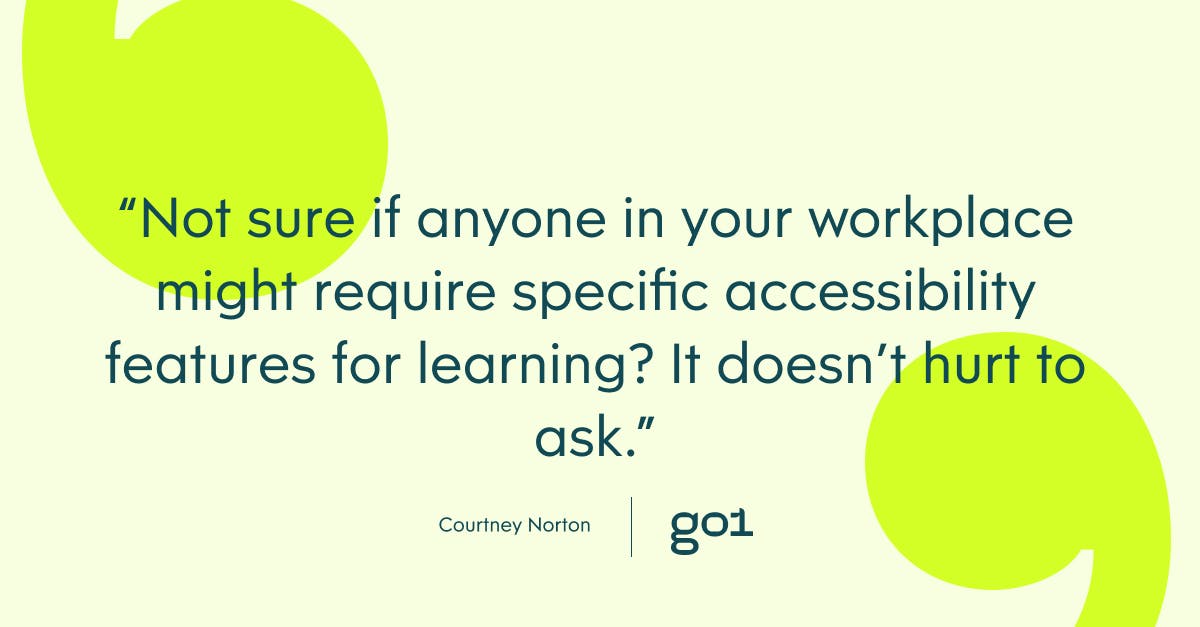Every organisation wants to have the best of the best working for them. But how do you find those people? And how do you get them to want to work for your organisation over others?
You could start the recruitment process, place ads on job websites, and interview candidates — a process that can sometimes take months and cost thousands.
While it may sound like something you’d hear in a meditation class, to find the talent you seek, it’s much easier to look within. By that we mean: invest in the staff you already have and focus on expanding their skills.
But what exactly makes building talent within your organisation worth the investment versus just hiring someone who already has the skills you need?
And if you do go down the path of building talent from within your organisation, what steps can you take to ensure that you’re able to maximise your results?
Why building talent is the way to go
At first glance, it might seem easier to bring in a superstar that already knows everything there is to know about your particular industry. Nevertheless, this solution neglects the ever-changing nature of the modern workforce and the importance of adaptability.
Someone might be considered a current industry expert, yet, they could quickly become a less sustainable option for your team if they struggle to learn new skills, whether due to ability or motivation.
In other words, it’s not just about having the skills, it’s about having the ability to adapt and acquire new skills.
When workplace leaders focus on helping their employees grow and acquire new skills, it creates a culture of learning within the workplace. Having an established learning culture opens the door for emerging talent that you may not have known was there.
Creating these opportunities and encouraging employees to pursue them has personal benefits for employees, including an increase in overall confidence at work. As such, employees are often happier too.
Employee happiness has positive knock-on effects for the business overall too. As Global Industry Analyst Josh Bersin explains:
“Employees who are the beneficiaries of deep investments of time and resources to stay relevant feel more committed to the organization, retention and engagement goes up, and the company now sees a clear pipeline of digital skills emerging in its own talent.”
Bersin continues, explaining that while an internal candidate who is freshly minted may appear less capable than an outside candidate with more experience, in reality, “the internal candidate brings with him or her well-honed networks, a good understanding of how the company works, and years of valuable business knowledge.
Encourage a love of learning
If you, as a workplace leader, notice an employee has gained a new skill or improved on one they already had, speak up about it. Let them know you’ve noticed the improvement and look forward to seeing what those new skills lead to.
Another huge factor in encouraging workplace learning is leading by example. It’s not just employees who should be learning new skills — workplace leaders should also be upskilling. It’s one thing to tell your employees how beneficial learning at work is, but when they can see it in action from someone higher up in the organisation, it’s much easier for employees to get excited.
Encouraging employees to learn new skills, even if they aren’t directly related to their job, is another way to help encourage a love of learning and build your organisation’s talent from the inside. For example, you may have hired a person to work in administration. However, if a learning module centred around human resources or marketing piques their interest, you may have unknowingly hired your next superstar. At the same time, that employee has been allowed to explore a new passion in the workplace without fear of it negatively impacting their current role.
Make your workplace learning accessible
Encouraging everyone to build their skills and participate in more workplace learning is fantastic. However, organisations are seriously limiting their talent-building potential if learning materials are not easily accessible to everyone.
The first thing that likely comes to mind when you think about accessibility at work is making accommodations for those who are affected by disabilities. Some ways to do this include introducing closed captioning for employees who are deaf or hard of hearing, or the ability to increase the text size on a screen for employees with a visual impairment.
Not sure if anyone in your workplace might require specific accessibility features for learning? It doesn’t hurt to ask. Not only will that mean more of your organisation can participate and feel included in talent-building, but employees will also know that you genuinely care about them and their experience in the workplace.
There are also other ways that workplaces can make their learning more accessible. For those that don’t have a lot of time on their hands, introduce them to micro-learning style courses. That way, the time taken from their workday for learning doesn’t feel overwhelming. For those that prefer to learn on the go, show them how they can access the learning materials on multiple devices.
Making workplace learning more accessible encourages all members of the workplace to grow their talent. When more people can easily use workplace learning tools, organisations are much more likely to uncover hidden gems of talent they may not have known existed.
Offer on-the-job development opportunities
Offering on-the-job development opportunities is a slightly different approach to what we’d typically describe as formal learning at work. However, by encouraging different methods of learning, we’re more likely to reach a broader audience and increase the number of engaged learners. Some ways to do this include offering involvement in on-the-job projects and task forces, or encouraging participation as presenters for training programs.
On-the-job development doesn’t mean you have to forget about the online courses we know and love. It just means you can now approach them with a more collaborative mindset. Think about how what you learned might impact the task force you’ve been part of. Then, discuss what sort of courses you might want to participate in that could help any future team projects.
As appealing as it may seem to hire someone that already has the skills your organisation is looking for, by taking the opportunity to build talent from within the organisation, workplace leaders are eliminating the need to train a brand new employee on internal workplace policies.
Not only that, but it also provides peace of mind to current employees who can see there’s room for growth within the organisation. Of course, this also does wonders for retention. In other words, much like fruit and vegetables, there’s nothing quite like homegrown talent.
Author – Courtney Norton of Go1













Leave A Comment